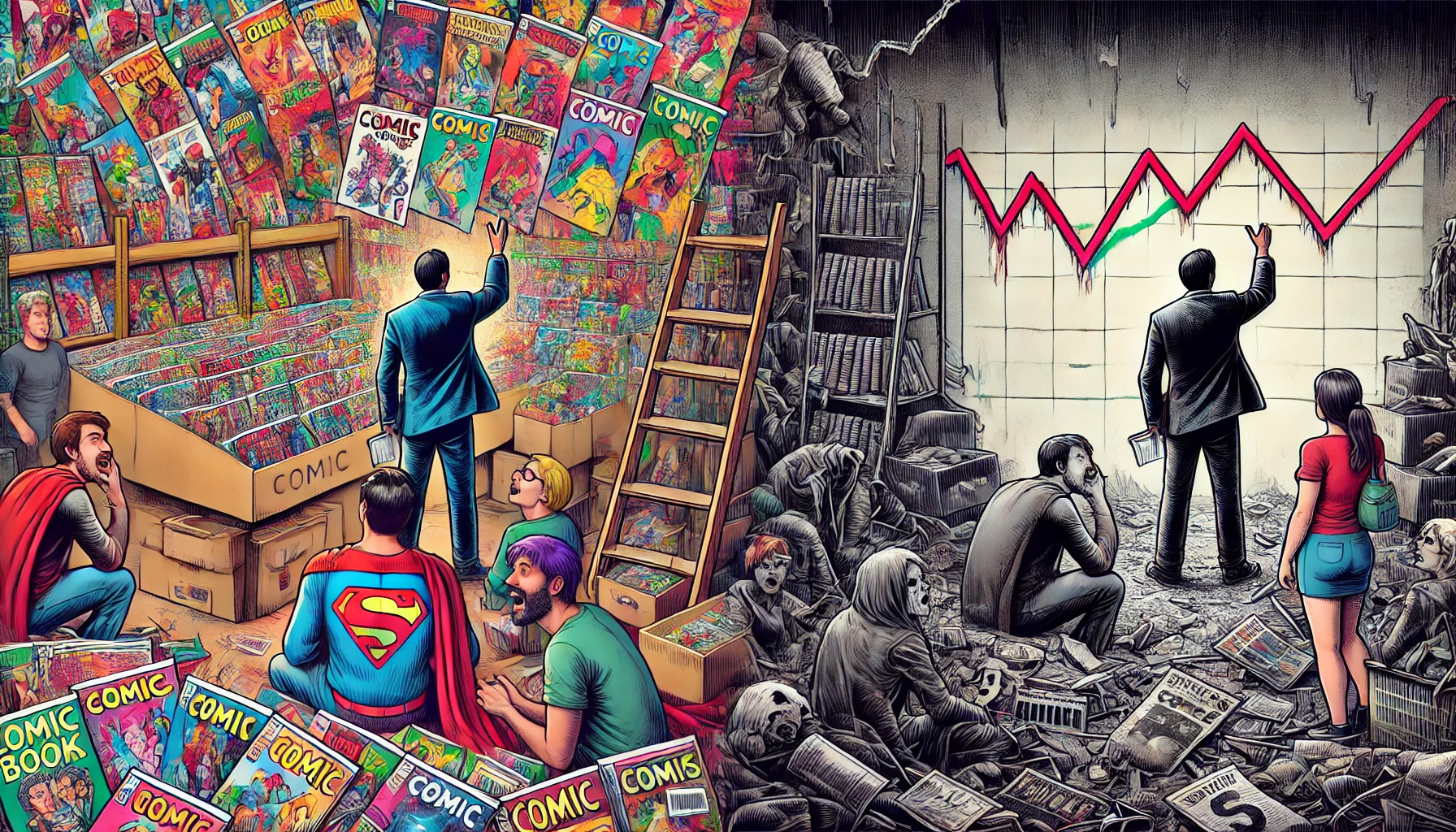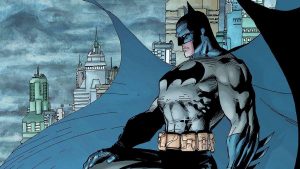The 1990s often get a bad rap among comic book collectors, cited as a period marked by poor industry practices, a speculative market boom and bust, and a decline in content quality. However, while the decade had its share of problems, it also gave rise to some positive developments that left a lasting impact on the comic book industry.
Speculative Market Boom and Bust
The early 90s saw an unprecedented speculative boom in the comic book market. Collectors and investors alike were convinced that modern comics would become valuable collector’s items, much like their Golden and Silver Age predecessors. This led to massive overproduction, with publishers churning out numerous variant covers, limited editions, and special issues in an attempt to capitalize on the hype.
Titles like “X-Men #1” (1991) by Marvel, with its multiple variant covers, sold millions of copies, and DC’s “The Death of Superman” became a media sensation. However, the market couldn’t sustain this artificial inflation. Collectors quickly realized that the abundance of “rare” issues diluted their value, leading to a market crash in the mid-90s. Many comic book stores closed, and publishers faced significant financial difficulties, with Marvel even filing for bankruptcy in 1996.
Quality of Content
During the 90s, the comic book industry became notorious for its emphasis on flashy, gimmicky content over substantive storytelling and artistic quality. The era was marked by the rise of extreme characters with exaggerated physiques, often depicted in over-the-top, action-packed scenarios. Storylines relied heavily on sensationalism, with numerous events, crossovers, and universe-altering plots.
This trend resulted in a perceived decline in the quality of comic book content. Characters were often introduced or altered to fit the extreme aesthetics of the time, sometimes at the expense of their original depth and appeal. The emphasis on style over substance led to a disconnect with readers who valued well-crafted narratives and consistent character development.
Publisher Practices
Major publishers like Marvel and DC played a significant role in the negative perception of the 90s. To maximize short-term profits, they flooded the market with an excessive number of titles and frequent crossovers. These strategies overwhelmed collectors and diluted the overall quality of the content.
Reboots and renumbering became common practices, further alienating long-time fans. Series were restarted from issue #1 to attract new readers (a practice that continues and is arguably even worse today), but this often resulted in confusing continuity and a sense of instability in the storytelling. The industry’s focus on immediate gains over sustainable growth contributed to the market crash and left a sour taste in the mouths of many collectors.
Collectible Fads
The 90s were also a decade dominated by collectible fads. The trading card boom spilled over into the comic book industry, leading to the creation of comic book trading cards and other non-comic book collectibles. Publishers produced special editions, holographic covers, and other gimmicks to entice collectors.
While these fads temporarily boosted sales, they ultimately distracted from the core focus of producing quality comic books. Many collectors felt that the industry had lost its way, prioritizing gimmicks over the art and storytelling that had initially drawn them to comics.
Emergence of Iconic Characters and Storylines
Despite its shortcomings, the 90s also introduced several iconic characters and storylines that have become staples of comic book lore. Marvel introduced Deadpool, a wisecracking, fourth-wall-breaking anti-hero who quickly gained a massive following. DC brought Harley Quinn into the mainstream, initially appearing in “Batman: The Animated Series” before transitioning into the comic book world.
Notable storylines like “The Death of Superman,” which saw the temporary demise of the Man of Steel, “Batman: Knightfall,” which introduced Bane and the breaking of Batman’s back, and Marvel’s “Age of Apocalypse” crossover event showcased bold, ambitious storytelling. These storylines, while sometimes criticized for their sensationalism, left a lasting impact on the comic book universe and are still celebrated by fans today.
Growth of Independent Publishers
One of the most significant positive developments of the 90s was the rise of independent publishers, particularly Image Comics. Founded by a group of high-profile Marvel artists, including Todd McFarlane, Jim Lee, and Rob Liefeld, Image Comics championed creator-owned content and offered an alternative to the big two (Marvel and DC).
Image Comics introduced successful titles like “Spawn,” “The Maxx,” and “WildC.A.T.s,” which brought diversity and innovation to the industry. The success of these indie titles proved that there was a market for creator-driven stories and helped pave the way for future independent publishers and titles. This movement empowered creators and enriched the comic book landscape with fresh, original content.
Technological Advancements
The 90s also saw significant technological advancements in comic book production. Improvements in printing technology resulted in higher-quality comic books with more vibrant colors and sharper images. The introduction of digital coloring revolutionized the aesthetic appeal of comics, allowing for more dynamic and visually stunning artwork.
These advancements set the stage for future innovations in comic book publishing, making it easier for creators to produce high-quality content. The improved production values of the 90s are a lasting legacy that continues to benefit the industry today.
Cultural and Market Influence
The 90s played a crucial role in expanding comic book culture into mainstream media. Animated series like “Batman: The Animated Series,” “X-Men: The Animated Series,” and “Spider-Man: The Animated Series” brought comic book characters and stories to a broader audience. These shows were critically acclaimed and remain beloved by fans.
The decade also saw the beginning of the comic book movie boom, with films like “Blade” (1998) and “X-Men” (2000) laying the groundwork for the explosion of superhero films in the 2000s and beyond. The cultural impact of 90s comics helped cement their place in popular entertainment and opened the door for the widespread acceptance of comic book adaptations in various media.
It’s Not All Bad
While the 90s are often viewed as a problematic decade for comic book collectors due to the speculative market boom and bust, questionable publisher practices, and a perceived decline in content quality, it’s important to recognize the positive developments that emerged from this period. Iconic characters and storylines, the rise of independent publishers, technological advancements, and the expansion of comic book culture into mainstream media all contributed to the evolution of the comic book industry. The 90s, despite its flaws, played a crucial role in shaping the comic book landscape we know today, and its legacy continues to influence and inspire the industry.




